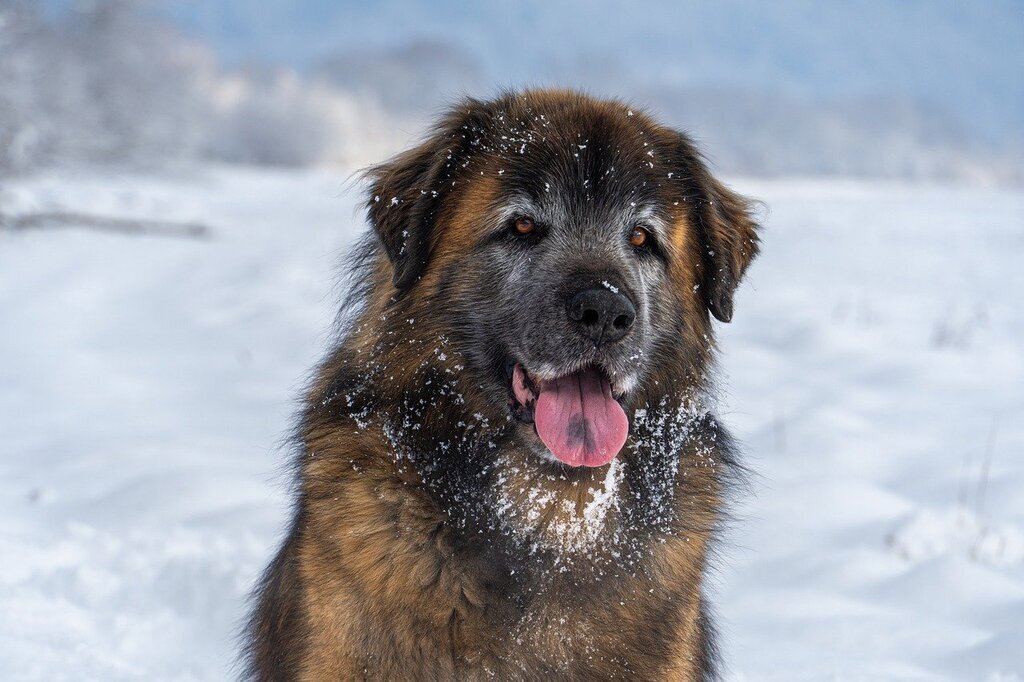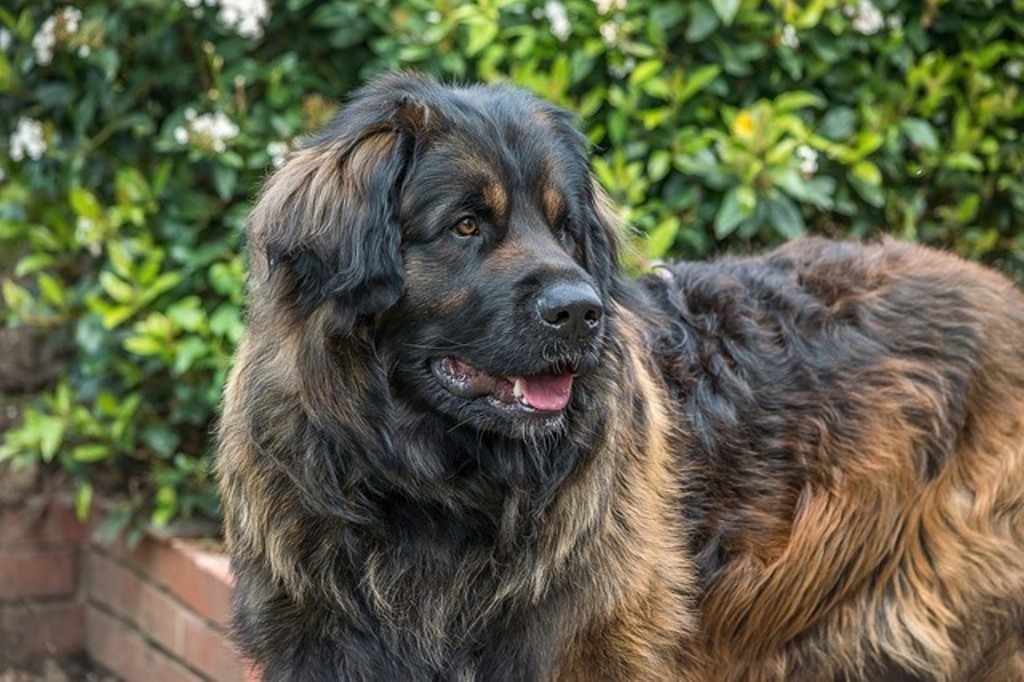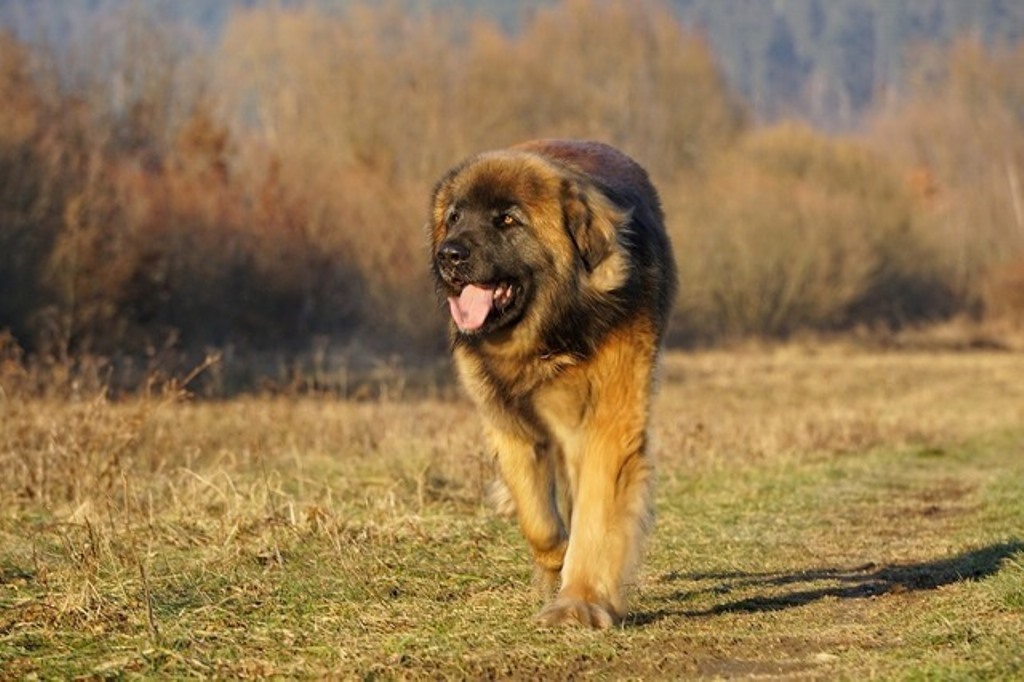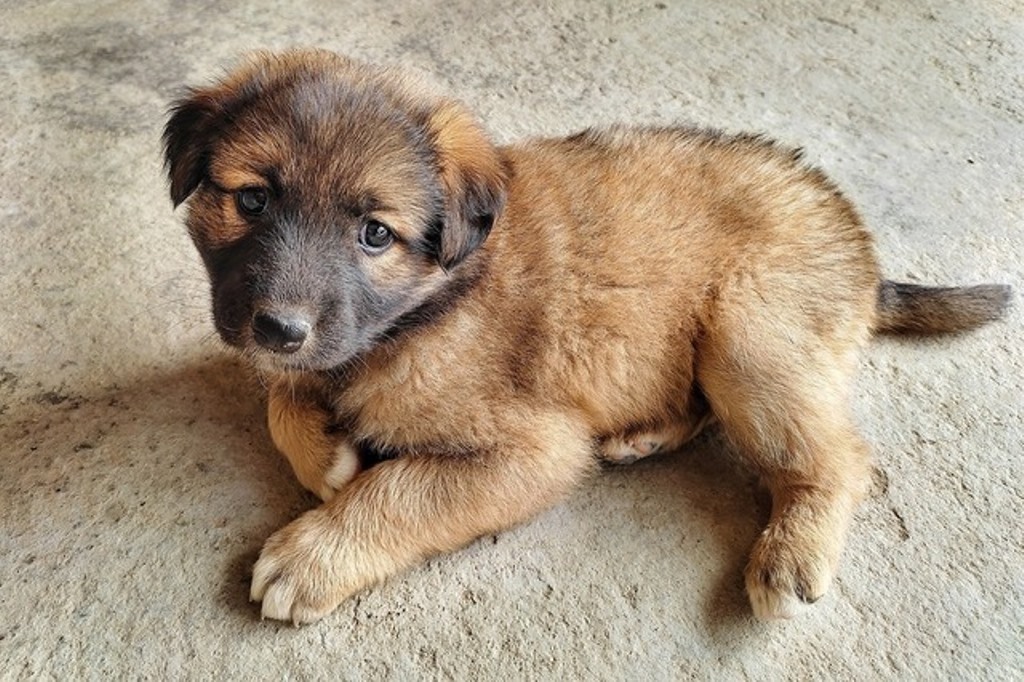
Leonberger Dog Breed: Strength and Gentle Majesty
The Leonberger dog breed is fairly recent; in fact, it was created in the first half of the 19th century by Heinrich Essig. He was a town councilor in the German town of Leonberger, near Stuttgart. His intent was to breed a dog that mimics the lion depicted in his town's heraldic coat of arms. According to his accounts the black and white Newfoundland, the long-haired Saint Bernard and the Pyrenean mountain dog were used. Later more St. Bernard and Pyrenean mountain dog specimens were crossed from the Great St. Bernard hospice, to which he then sent his own specimens to the hospice at the request of the monks, who had had their breeding decimated by disease. So the origins of the breed are rather nebulous. However, the latest crosses went on to perfect the appearance of the new dog breed.
This theory has been refuted by other canine experts; according to Herbert Schiffmann, some shepherd dogs found in the Caucasian-Alpine areas would have been used to make the leonberger.
However, this research was a success; in fact, these imposing dogs brought together all the best qualities of the breeds that had been employed, becoming well known and sold all over the world. That was until the two world wars. With the advent of the two wars and the consequent postwar poverty, very few in Europe could afford to maintain such large and demanding dogs, so their numbers dropped dramatically.
It was only thanks to a few lionberger lovers that this breed was saved from extinction. These few remaining owners gathered their forces and with commitment developed a new breeding of the breed. And it was thanks to them that today there are numerous dog associations around the world that breed this fascinating and impressive animal.
It has also been a famous dog; Garibaldi gave a puppy to his Anita and even The Empress of Russia, Elizabeth, i.e. Princess Sissi is said to have owned as many as seven.
Character of the leonberger dog breed

In spite of its imposing size, the leonberger is a good and peaceful dog. He is described as balanced, calm and thoughtful, very suitable for family living as especially for children, he has a real fondness. He has a lot of patience and a great sense of responsibility, things that make him a very reliable playmate.
He adapts well to the needs of his family, becomes an active dog for long walks when needed, a working dog, very useful in water rescue. In fact he possesses a natural predisposition toward swimming and water in general. And still it can be a perfect companion dog, in fact this breed develops a deep relationship with its loved ones and for this reason it particularly suffers from loneliness. It is not an independent dog and needs constant participation in family life. However, he can also lead a placid and relaxed lifestyle, although he needs some exercise. Ideally, a home with a large garden, where he can romp, would be ideal for him.
Because of his never aggressive or fearful nature, he can be taken everywhere, despite his size. He adapts and always reacts very calmly to new situations and strangers. In his environment he is an excellent guard dog, very protective of his family.
As far as its education is concerned, this breed does not entail any special problems; it usually responds very well to commands and is well predisposed from the beginning to submit to its master. Thus it is particularly suitable for those who do not have much experience in dog training, as long as it is done consistently and consistently.
As already mentioned it can be used as a rescue dog; in Austria and Germany it is also used as an avalanche dog. It barks little, but defends the house in times of need, and in case of a serious threat to its family it can become very dangerous. Because of its peaceful disposition it gets along well with its peers and also with other animals.
Appearance of the leonberger dog breed

The leonberger is a giant dog breed, a male at the withers can be 80 centimeters tall and weigh up to 75 kilograms. Females are smaller, their height can range from 65 to 75 centimeters for a weight of about 60 kilograms. It is an imposing dog, but always elegant, harmonious and well-proportioned; its proud appearance and noble bearing certainly does not go unnoticed.
He is a very robust and muscular dog, with large but proportionate bones. Its paws are powerful and muscular, covered with fur with long bangs. Its front end is impressive in size and strength. Its tail is long, and is generally carried slightly curved.
The head is deeper than wide, and the muzzle is long but not pointed. The muzzle, tending to black because of the characteristic black markings, resembles that of a bear, (it is really huge). The ears are triangular and drooping. The eyes are almond-shaped, have a very sweet expression, and range in color from hazel to dark brown.
Its impressiveness is amplified by its fur; it has so much of it that a veritable mane forms on the neck and chest. The coat is long, medium-soft to hard, with a thick undercoat.
The color of the coat except for the mask on the muzzle, which is black, and the darker hair tips, ranges from lion yellow tending to brown, red, sand-colored and all gradations of these colors.
Health and care of the leonberger dog breed

Unfortunately, the average lifespan of the leonberger, like all large dogs is not very long, it can be up to 10 years at most, which is also quite rare. Many specimens die around 5-6 years of age and sometimes even earlier due to two diseases. The first is typical of the breed; in fact, it is called hereditary leonberger polyneuropathy, while the second is the so-called 6-year-old sarcoma, which also affects other medium to large breeds. The most common is bone sarcoma. In general, large sizes have a much higher risk of developing it than small sizes.
He may be prone to stomach torsion and hip dysplasia. His diet should be well balanced, encouraging the consumption of vitamin D and calcium. Being a gluttonous dog, it has a tendency to gain weight.
As for coat care, this is quite demanding and needs time. Its long thick coat needs to be brushed very often to prevent it from curling. Despite the dense coat, fur loss is limited to the two annual molts, however, during these periods the loss is copious.
Heat is poorly tolerated, so it should be kept in the shade and with fresh water available at all times. In contrast, cold weather is not a problem; in fact, this animal loves snow. However, it is recommended not to keep it in the rain, as it risks ear infections.






















